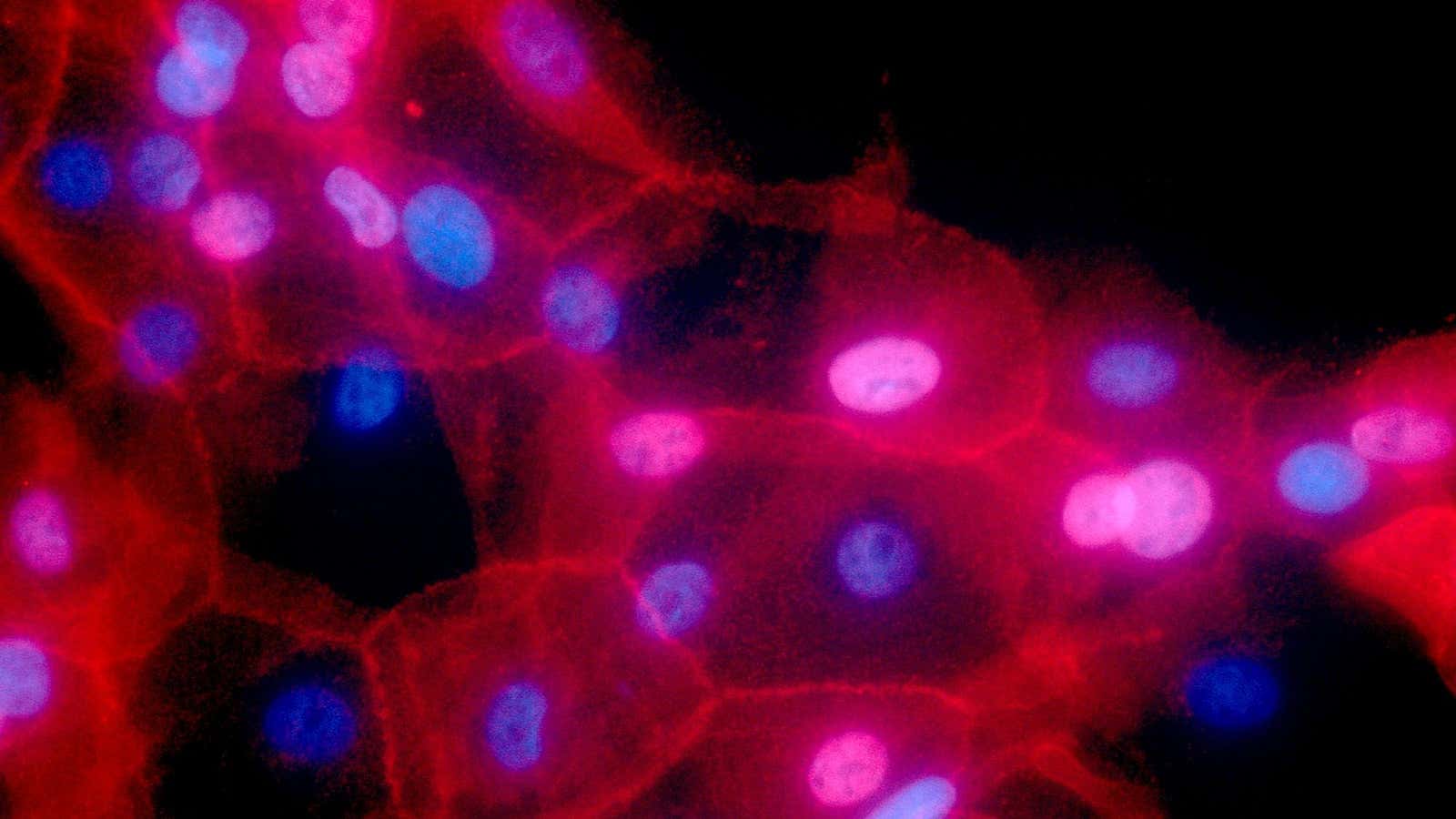The good news is, over the past quarter of a century, cancer deaths have been on the decline in the US. The bad news is, not everyone benefited equally.
According a report published Tuesday (Jan. 8) by researchers at the American Cancer Society, there were 215.1 cancer-related deaths per 100,000 people in the US in 1991. Over the next 25 years, that rate steadily decreased by about 1.5 annually; in 2016, cancer killed 156 people per 100,000 people. That’s a decline of 27%.
The research team estimates that thanks to factors like lower smoking rates, earlier cancer detection, and better treatment, over 2.6 million lives were saved in that time period.
However, those positive trends haven’t been evenly distributed.
Researchers divided all the counties in the US into five groups, based on the number of people living in them in extreme poverty. People living in the poorest quintile of counties (where roughly 21% to 54% of residents were in extreme poverty) were more likely to die of cancer than those living in richest quintile of counties (where only 1.8% to 10.8% of people were impoverished).
“The disparities by socioeconomic status are actually widening,” Rebecca Siegel, a researcher with the American Cancer Society and lead author of the paper, told CNN. Mortality rates for poor people were significantly higher for cancers that are largely preventable though lifestyle changes, like smoking cessation. Additionally, some of these cancers would likely not have been fatal if screenings had caught them sooner.
That said, because there are some lags in these data, they might not tell the whole story. As Axios noted, for example, this report doesn’t show the full benefits of improvements in access to healthcare through the Affordable Care Act, which was enacted in 2010, or the impacts of a vaccine first approved in 2006, against the cervical cancer-causing human papilloma virus.
Cancer is the second-leading killer in the US, and it’s poised to soon pass heart disease for that top slot. As Quartz has written previously, this is largely a positive trend that shows the benefits of access to health care and advances in treatments. However, these benefits have yet to fully reach poor communities. “These counties are low‐hanging fruit for locally focused cancer control efforts, including increased access to basic health care and interventions for smoking cessation, healthy living, and cancer screening programs,” the authors of the paper write.
